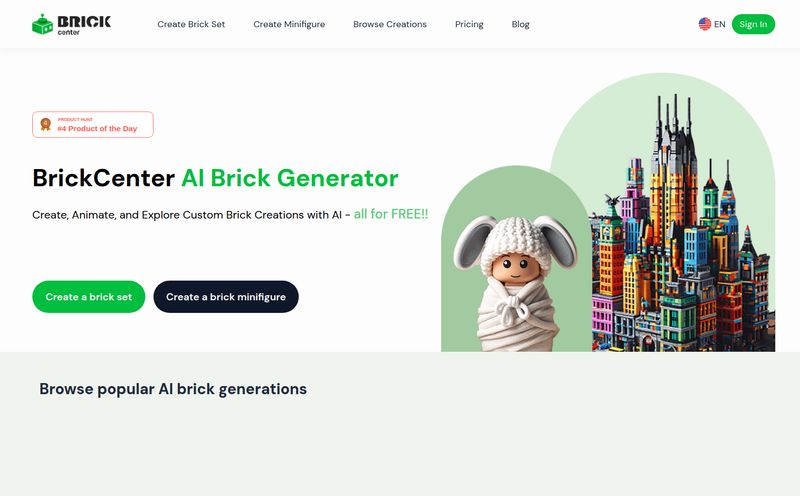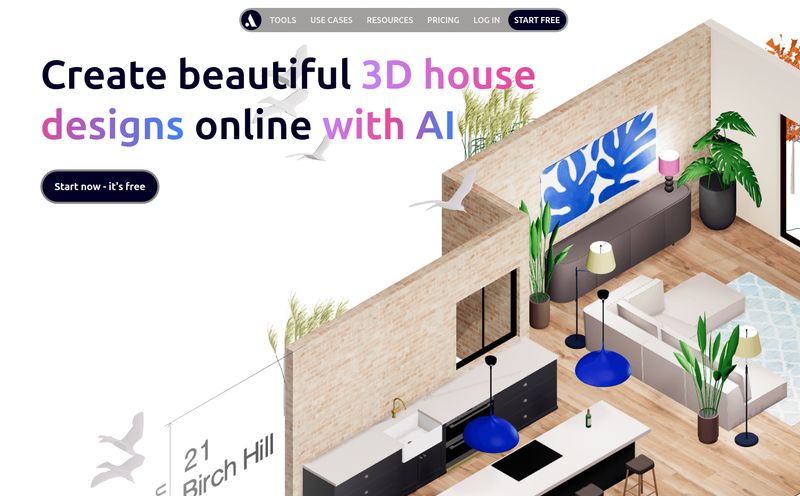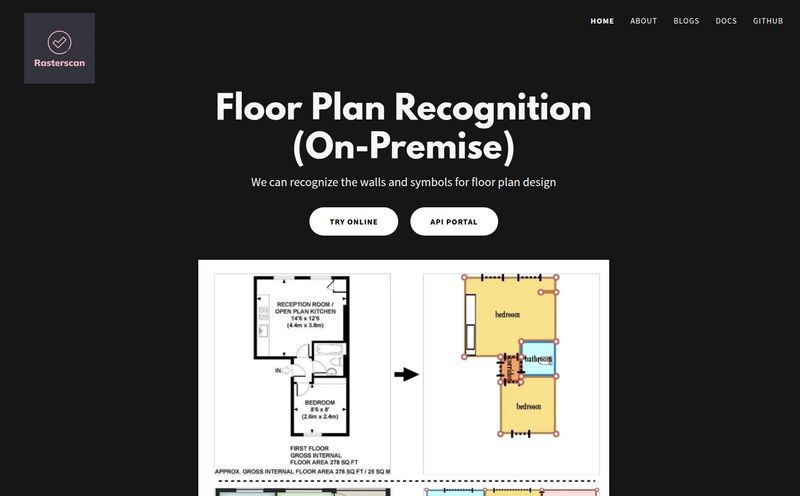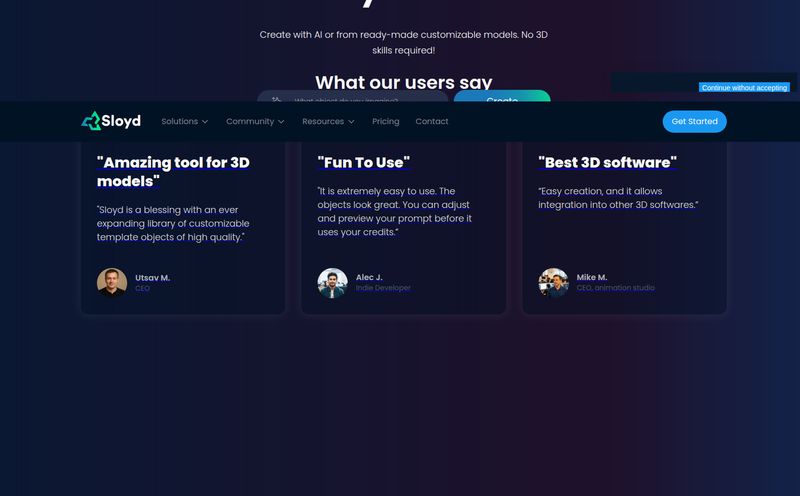We've all been there. Wandering through a sprawling hospital, trying to find the right department. Getting hopelessly turned around in a multi-level shopping mall. Or doing the frantic power-walk through a massive airport, convinced your gate is in another time zone. The little paper maps they hand out are cute, but they feel like a relic from another era, don't they? They're static. They're flat. And they're not very helpful when you’re stressed and lost.
For years, we've had the magic of Google Maps to guide us on the roads, but the moment we step inside a building, we're back in the dark ages. This is the exact problem that indoor mapping platforms are trying to solve. And lately, one name keeps popping up on my radar: Mappedin. They’re making some big promises about using AI to create interactive, 3D indoor maps, and doing it fast. As someone who's spent years obsessing over user experience and traffic (both the web and foot kind!), I had to see if it lived up to the hype. Is this the tool that finally makes getting lost indoors a thing of the past?
What Exactly is Mappedin, and Why Should You Care?
So, what's the deal with Mappedin? Think of it like this: it’s a toolkit for creating your own private Google Maps, but for the inside of your building. Whether you run a retail center, a corporate campus, a stadium, or a complex medical facility, Mappedin gives you the power to digitize your space. It’s not just about creating a picture of a floor plan; it’s about building a dynamic, searchable, and navigable digital twin of your venue.
Why does this matter? Because a good map does more than just show you where to go. It reduces visitor anxiety, improves foot traffic flow, and can even boost sales. When customers can easily find that one specific store they're looking for, they're happier. When new employees can find their meeting room without a frantic search, their first day is a little less stressful. It's a subtle but powerful enhancement to the overall experience of a place. And seeing logos from giants like Simon Malls and LAX on their site tells me they're playing in the big leagues.
The AI-Powered Magic: How Mappedin Creates Maps
This is the part that really got my attention. Traditionally, creating a digital map was a slog. It involved tedious, manual work with complex software, basically tracing over architectural drawings. It took forever and cost a fortune.
Mappedin’s approach is different. They lean heavily on AI. The idea is you can upload a 2D floor plan—you know, the kind of PDF or CAD file you probably have buried on a server somewhere—and their platform automatically converts it into a structured, editable map. The AI identifies walls, doors, rooms, and pathways, doing the bulk of the grunt work in a fraction of the time. It's like having a digital cartographer on staff, one that’s been trained on millions of square feet of floor plans.
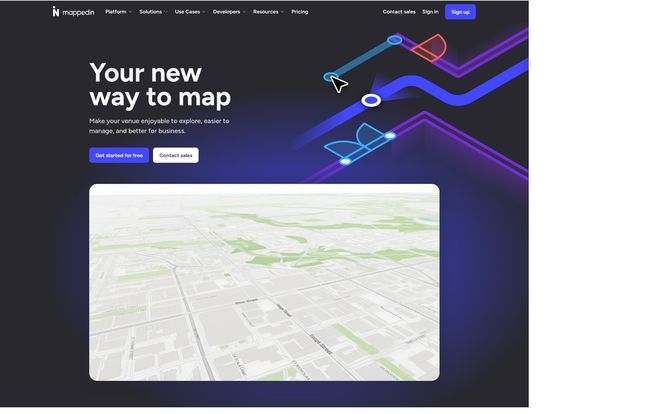
Visit Mappedin
Of course, it's not a one-click magic button. You still need to go in and label things, add store names, and fine-tune the details. But it gets you 80% of the way there, turning a weeks-long project into something you can tackle in a few days. For anyone who’s ever been quoted an astronomical price for digitization, this is a huge deal.
Beyond the Blueprint: Exploring Mappedin's Core Features
A pretty map is nice, but utility is what counts. Mappedin seems to understand this, building out a suite of features that turn the map from a static image into a living tool.
Interactive 3D Maps That Don't Feel Like a '90s Video Game
The first thing that stands out is the 3D. We’re not talking about clunky, blocky models. These are smooth, responsive maps that users can pan, zoom, and rotate. This spatial awareness is something a flat 2D map can never offer. You can actually see that the food court is one level down, or that the store you want is around the corner. It's an intuitive experience that just clicks with how our brains process physical space. For a visitor, this is the difference between confusion and clarity.
One Map to Rule Them All: Sharing and Integration
Creating a beautiful map is pointless if no one can see it. Mappedin gets this. Their whole philosophy is “one map everywhere.” Once you’ve built and updated your master map in their editor, you can push it out to all your platforms simultaneously. This means the map on your website, the one on your mobile app, and the one on a physical kiosk in your lobby are all powered by the same, up-to-date source. No more updating three different maps every time a tenant changes. It’s a huge operational win.
For the tech-savvy crowd, they also offer SDKs and APIs. Now, the documentation does mention this might require some developer knowledge, which is a fair point. But for larger organizations, this is a feature, not a bug. It means you can integrate the map deeply into your own systems, maybe pulling in real-time inventory data or connecting it to your building management software. Powerful stuff.
Keeping It Fresh: Map Management and Updates
I’ve seen it a million times: a beautiful directory that's hopelessly out of date. Store C closed six months ago, and Store D moved to the other end of the building. An outdated map is worse than no map at all. Mappedin’s editor is designed for this reality. It's a web-based tool where you or your team can log in, drag-and-drop locations, update store information, and even block off paths for maintenance. The changes can then be published instantly. This agility is what separates a modern mapping solution from the static directories of old.
Let’s Talk Money: A Realistic Look at Mappedin’s Pricing
Alright, let's get to the question on everyone's mind: what does it cost? I appreciate that Mappedin is pretty transparent with their pricing, offering a tiered system that scales with your needs. It's a per-map, per-month model, which is easy to understand.
| Plan | Price (Billed Annually) | Best For |
|---|---|---|
| Mappedin Free | $0 /map/mo | Testing the platform, small venues, or single-floor layouts that only need basic 2D mapping. A fantastic entry point. |
| Mappedin Plus | $25 /map/mo | The sweet spot. This unlocks the interactive 3D map and is ideal for most shopping centers, office buildings, and mid-sized venues. |
| Mappedin Pro | $165 /map/mo | Power users and complex venues. Adds advanced features like turn-by-turn navigation (wayfinding), premium 3D, and real-time location visualization. |
| Mappedin Enterprise | Custom | Massive, multi-building operations like airports, university campuses, or large-scale logistics centers that need custom solutions and support. |
The per-map model is clear, but it is something to consider. If you're managing a campus with 20 individual buildings you want to map, you'll need to do the math. However, for a single, large venue like a mall, it’s a pretty straightforward calculation.
The Good, The Bad, and The Geo-Located
No tool is perfect, so let’s break it down. After digging through their site and features, here’s my take.
The Good: The speed of the AI-powered creation is a genuine game-changer. The quality of the 3D interactive maps provides a truly premium user experience. And the ability to manage one central map and deploy it everywhere is a massive time-saver for operations teams. It feels modern, scalable, and built to solve real-world problems.
The Not-So-Bad: The cons are less about flaws and more about realities. Yes, the most powerful features are behind a paywall—but that's true of any serious B2B software. It's a professional tool and its priced like one. The need for a developer for deep integrations isn't a downside for the enterprise clients it's aimed at; it's an expectation. The main thing to be aware of is simply planning your budget around that per-map pricing if you have a lot of separate spaces.
Who Is Mappedin Really For?
I can see this working for a few key people:
- The Overwhelmed Mall Manager: They can finally offer shoppers a digital directory that works, helping them find stores and boosting tenant visibility. The ability to quickly update the map when a pop-up shop opens is invaluable.
- The Innovative Airport Director: They can guide passengers from security to their gate with turn-by-turn directions, showing them food and retail options along the way. This reduces stress and increases concession revenue.
- The Corporate Facilities Planner: They can help employees navigate a sprawling corporate campus, book meeting rooms through the map, and manage a hybrid work model more effectively.
So, Should You Put Your Venue on the Mappedin Map?
In my book, if you manage a physical space that people need to navigate, ignoring modern indoor mapping is like refusing to have a website in 2005. It's quickly shifting from a “nice-to-have” to an essential piece of the customer and employee experience puzzle.
Mappedin seems to have found a sweet spot between powerful features and user-friendly design. The AI assistance lowers the barrier to entry, and the scalable pricing means it’s not just for the mega-corporations. If you're looking to bring your venue into the 21st century and make your space more discoverable, Mappedin is absolutly worth a serious look. I'd say start with the free plan, upload a floor plan, and see the magic for yourself. You might be surprised at how easy it is to finally put your space on the map.
Your Mappedin Questions, Answered
Can I really make a map for free with Mappedin?
Yes, absolutely. The Mappedin Free plan allows you to create and publish a 2D map with basic search functionality. It’s a great way to test the platform and get your venue digitized without any initial cost.
How hard is it to update my map if a store moves?
It's designed to be simple. You use the web-based Mappedin Editor to make changes. It's a visual interface where you can drag and drop locations, edit names, and change pathways. The changes can then be published to all your platforms at once.
Do I need to be a developer to use Mappedin?
For the core features—creating, editing, and sharing your map via a simple link or embed—you do not need to be a developer. However, to take advantage of the advanced customization through their SDKs and APIs, you or someone on your team would need development knowledge.
What kind of file do I need to get started?
Typically, you’ll start with a 2D floor plan file. This can be a CAD file (like a .dwg) or even a high-quality PDF or image file (.png, .jpg) of your building's layout. The AI uses this as the foundation to build your map.
Is Mappedin suitable for a small office with just one floor?
Yes, it's a great fit. A small office could likely use the Free plan for a simple 2D map, or the Plus plan if they want the polished look of a 3D interactive map for visitors or new employees.
How does the 3D mapping actually work?
Mappedin's AI analyzes your 2D floor plan to identify geometric shapes like rooms and hallways. It then “extrudes” these shapes vertically to create a basic 3D model. From there, you can use their editor to refine details, add textures, and place 3D objects to make it a more realistic representation of your space.
Reference and Sources
- Mappedin Official Website
- Mappedin Pricing Details
- The Growing Importance of Indoor Mapping for Smart Buildings - GeoSpatial World
